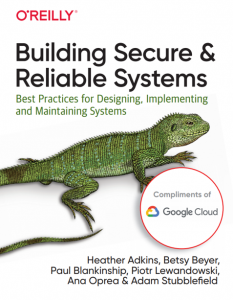Site Reliability Engineering
Site Reliability Engineering is a discipline that covers the aspects of software engineering that apply to solve infrastructure and operational problems. SRE – defined by Benjamin Treynor Sloss (Vice President, Engineering @Google) is as a way of thinking and approach to software production and is a set of rules and practices. The concept boils down to treating all operations as software problems to be remedied by engineers. SRE at Google focuses on protecting, sharing and developing software and systems for all of Google’s public services, which is also a testament to high availability, low latency and better performance of their services. You can watch the full story of SRE in the video below:
SRE has a comprehensive application in IT. In addition to building reliability and better performance, SRE can be used for incident management, workloads, machine learning or DevOps (DevSecOps). However, the most important issue is safety, which is a pillar when designing reliable solutions. Therefore, the item “Building Secure & Reliable System: Best Practices for Designing, Implementing and Maintaining Systems” should be a must in every programmer’s library..
This issue includes, among others:
- Design strategies including best design practices for understanding, resilience and recovery, as well as specific design principles such as “least privilege”.
- Recommendations for coding, testing and debugging.
- Preparedness, response and incident recovery strategies.
- Cultural best practices that facilitate effective collaboration for teams across the organization.
In addition, the position has been developed by practitioners specializing in security and reliability. Organizations increasingly rely on technology, even if it is not their core business. And its growing importance means that we have to rely more on the reliability of the solutions. The complexity of modern systems and the speed with which they are developed mean that safety and reliability must be emphasized from the very beginning for maximum efficiency.
It is not only natural to see these elements and as intrinsic system properties, but they are critical in today’s automated, connected and complex technological landscape. The concept of an integrated safety and reliability model takes time. Therefore, before it evolves and becomes a natural part of the ecosystem, it is widely discussed in the DevOps and DevSecOps communities. Many development cycles and organizations focus functionally on the division of labour between teams responsible for development, testing, security, reliability and system operation. Consequently, this model will have to be constantly adapted to the requirements of technological changes.

In summary, safety and reliability must be an integral part of the entire design process. The benefits that can be obtained from the use of Site Reliability Engineering include:
- Bridging the gap between developer and system administrator.
- Automation of the process.
- Constant monitoring and analysis of application performance.
- The possibility of free product development.
These are just a few of the many advantages and opportunities offered by SRE, which allows for development and adaptation to technological changes.
If you want to learn the principles of good solution design, not only in the context of site reliability, be sure to read our previous posts. We recommend:
- DevSecOps as a security guard
- “Well-Architected!” – AWS framework that allows for efficient and safe environment design in the cloud
- Machine learning know-how from AWS in the spirit of Well-Architected
- Serverless Lens in Well-Architected Tool
- Cloud security as a business value of Google

